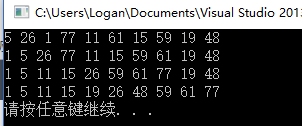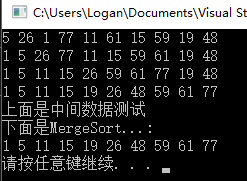数据结构与算法(C语言版)__归并排序
归并排序是对两个已经排序的数组合并在一起。
下面使用迭代的方式实现归并排序
#define _SCL_SECURE_NO_WARNINGS
#include下面看一步一步进行归并排序
#define _SCL_SECURE_NO_WARNINGS
#include下面看整体的归并排序:
#define _SCL_SECURE_NO_WARNINGS
#include总结:归并排序的速度和快速排序一样,使用三个函数写成一个归并排序,唯一的缺点是需要使用两倍的内存, 如果要排序1M的数据,就要使用2M的内存,因为使用了临时数组。但是现在电脑内存都比较大,所以这个问题也不算严重。


